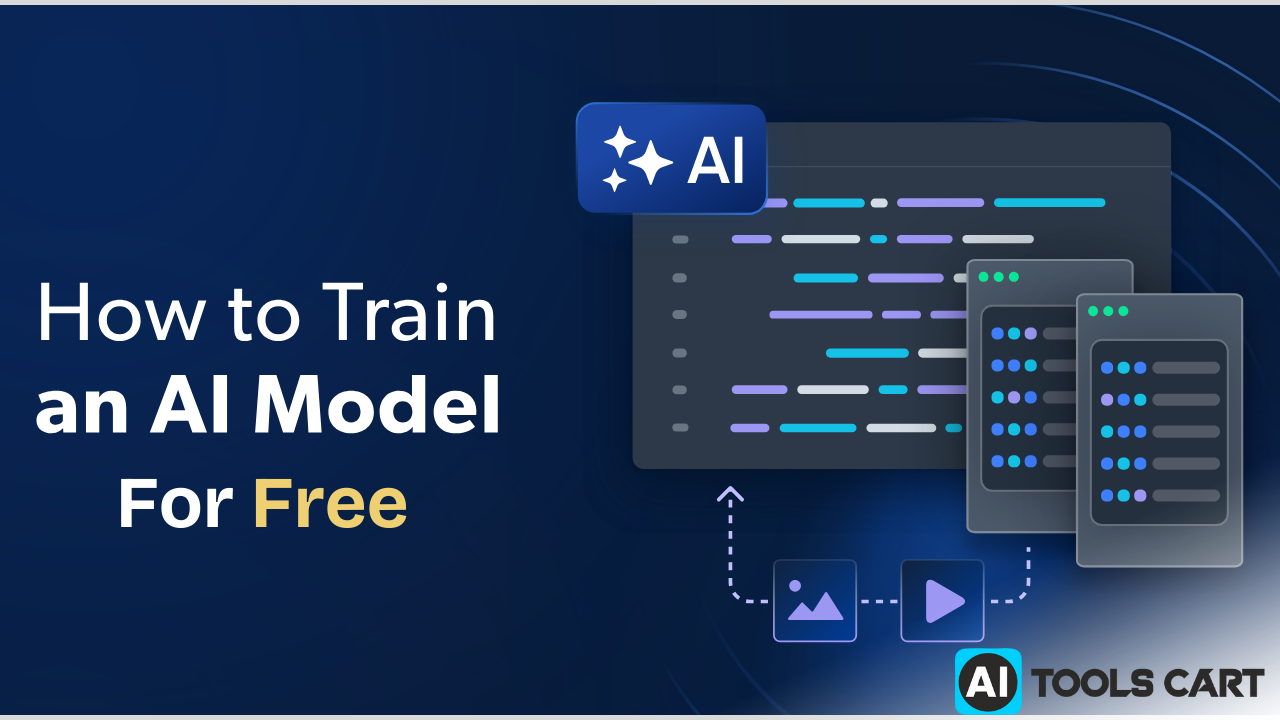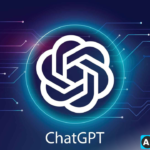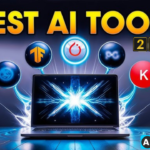
how to train Ai model for free
Key Points
- It is possible to train AI models for free using various platforms, though some have limitations.
- Popular options include Google Colab, Teachable Machine, Kaggle, and OpenArt, each with different features.
- Research suggests that free platforms are ideal for beginners, but advanced users may need paid upgrades for complex models.
- The evidence leans toward Google Colab and Kaggle offering robust free GPU access, while Teachable Machine is best for no-code users.
Introduction to Free AI Model Training
Training AI models can seem expensive, but there are several free platforms that make it accessible for everyone. Whether you’re a beginner or looking to experiment, these tools provide a starting point without financial barriers. Below, we explore the top platforms, their features, and how to get started.
Top Platforms for Free AI Model Training
Here’s a breakdown of the best platforms to train AI models for free, along with their pros and cons:
- Google Colab: A cloud-based Jupyter notebook environment with free GPU and TPU access, ideal for machine learning and deep learning. Visit Google Colab to train AI model.
- Teachable Machine: A no-code tool by Google for training simple models like image or sound classification, perfect for beginners. Check it out at Teachable Machine.
- Kaggle: Offers free GPU hours and a community-driven notebook environment, great for data science projects. Explore at Kaggle.
- OpenArt: Focuses on AI art generation with some free credits, but model training may require a subscription. See more at OpenArt.
Each platform has unique strengths, so choose based on your needs and technical comfort level.
Unexpected Detail: Community and Collaboration
An unexpected benefit of platforms like Kaggle is the vibrant community, where you can share notebooks and learn from others, enhancing your AI training experience beyond just free access.
Survey Note: Comprehensive Guide to Training AI Models for Free
This detailed survey note explores the various platforms and methods available for training AI models at no cost, catering to beginners and experienced users alike. It builds on the key points and provides a thorough analysis, including practical steps, pros and cons, and additional considerations.
Understanding AI Models and Training
AI models are algorithms designed to learn from data and make predictions or decisions without explicit programming. To train AI models for free, you need to feed them data to identify patterns, ranging from simple machine learning tasks like classification to complex deep learning for image recognition. The process requires computational resources, which can be costly, but free platforms help mitigate this barrier, making it easier to train AI models for free without high expenses.
Detailed Platform Analysis
Google Colab: Cloud-Based Power for AI Training
Google Colab is a cloud-based Jupyter notebook platform that allows users to write and execute Python code, particularly for machine learning and deep learning. It offers free access to GPU and TPU hardware, making it suitable for training complex models.
- How to Use:
- Sign up and create a notebook at Google Colab.
- Enable GPU or TPU by selecting “Change runtime type” from the Runtime menu.
- Install libraries like TensorFlow or PyTorch using !pip install commands.
- Write and execute code, and mount Google Drive for data storage with from google.colab import drive; drive.mount(‘/content/drive’).
- Pros and Cons:
- Pros: Free GPU and TPU access, no setup required, ideal for deep learning.
- Cons: Sessions may time out after inactivity, and hardware availability is not guaranteed.
- Use Cases: Training neural networks for image classification, natural language processing, and more, as detailed in a tutorial at How to Use Google Colab for Deep Learning.
Teachable Machine: No-Code AI for Beginners
Teachable Machine, developed by Google, is a web-based tool that enables users to train simple machine learning models without coding. It’s designed for tasks like image, sound, and pose classification, making it accessible for non-technical users.
- How to Use:
- Visit Teachable Machine and choose a model type (image, sound, or pose).
- Collect data using your webcam or microphone for each class.
- Click “Train” to start the process, then test and export the model for use in web applications.
- Pros and Cons:
- Pros: No coding required, user-friendly interface, great for educational purposes.
- Cons: Limited to specific model types, may lack accuracy for complex tasks.
- Use Cases: Teaching a computer to recognize different hand gestures or animal sounds, as highlighted in Teachable Machine 2.0 makes AI easier for everyone.
Kaggle: Community-Driven AI Training
Kaggle is a platform for data science competitions and hosting datasets, offering a free notebook environment with GPU access. It’s particularly useful for collaborative learning and experimenting with machine learning models.
- How to Use:
- Sign up at Kaggle and create a new notebook.
- Select a kernel with GPU support and load datasets from Kaggle’s repository or upload your own.
- Write and execute Python code using libraries like TensorFlow, and share your work with the community.
- Pros and Cons:
- Pros: Free GPU hours, large community, access to numerous datasets.
- Cons: Limited GPU hours per day, requires phone verification for GPU access.
- Use Cases: Participating in competitions or training models on public datasets, as noted in Kaggle Tutorial: Your First ML Model.
OpenArt: AI Art Generation with Custom Models
OpenArt focuses on AI-driven art generation, allowing users to train custom models for image creation using a small set of images. While it offers some free credits, model training may require a subscription.
- How to Use:
- Sign up at OpenArt and upload images representing your desired style or character.
- Follow the platform’s instructions to train the model, which takes a few minutes.
- Generate new images based on the trained model, noting that full functionality may require a paid plan.
- Pros and Cons:
- Pros: Easy for creative tasks, no coding needed for basic use.
- Cons: Model training often requires a subscription, limited to image generation.
- Use Cases: Creating consistent character designs for storytelling or branding, as described in Train your own model.
AI Builder from Microsoft: No-Code Business AI
AI Builder, part of Microsoft’s Power Platform, enables users to build AI models without coding, integrating with Power Apps and Power Automate for business applications. It offers a trial period, but full functionality may require a subscription.
- How to Use:
- Sign up for a free trial or subscription to Power Platform and access AI Builder.
- Choose a model type (e.g., object detection, form processing) and connect your data.
- Train the model through the interface and integrate it into applications.
- Pros and Cons:
- Pros: No coding required, integrates with Microsoft’s ecosystem.
- Cons: Trial has limited capacity, may need paid add-ons for extensive use.
- Use Cases: Automating document processing in businesses, as outlined in Overview of AI Builder.
Comparative Table of Free Platforms
| Platform | Free Access Type | Best For | Limitations |
|---|---|---|---|
| Google Colab | Free GPU/TPU hours | Deep learning, coding users | Session timeouts, hardware limits |
| Teachable Machine | Completely free | No-code, beginners | Limited model types, accuracy |
| Kaggle | Free GPU hours | Data science, community | Daily GPU limits, verification |
| OpenArt | Free credits, paid training | AI art, creative tasks | Subscription for full training |
| AI Builder | Trial, limited capacity | Business, no-code users | Requires paid plan for full use |
Other Options and Considerations

Beyond these platforms, open-source libraries like TensorFlow and PyTorch can be used to train AI models for free on local machines or through cloud platforms with free tiers, such as AWS or IBM Watson Studio. However, these may require significant computational resources, potentially incurring costs if not covered by free tiers. For instance, AWS offers free machine learning services, but deep learning on large datasets may exceed free limits, as noted in Free Machine Learning Services – AWS.
Best Practices to train AI Models
To maximize success when training AI models, consider the following:
- Ensure data quality and quantity: Clean, diverse datasets improve model performance.
- Select the appropriate model: Match the model type to your task (e.g., classification, regression).
- Tune hyperparameters: Optimize model parameters for better results.
- Validate and test: Regularly check model performance on new data to avoid overfitting.
Conclusion and Future Outlook
To train AI models for free, platforms like Google Colab, Teachable Machine, Kaggle, OpenArt, and AI Builder offer great options for beginners and small projects. While free choices are ideal for learning, advanced users may require paid upgrades for complex tasks. As of March 30, 2025, the ability to train AI models for free continues to improve, with growing community support and resources enhancing accessibility. Whether you’re a beginner or an expert, these platforms make it easier than ever to train AI models for free efficiently.
FAQ: Train AI Models for Free
1. Can I really train AI models for free?
Yes! Platforms like Google Colab, Teachable Machine, and Kaggle allow you to train AI models for free with GPU access and no-cost tools.
2. Which platform is best for beginners?
Teachable Machine is ideal for beginners as it allows you to train AI models for free without any coding.
3. Are there limitations to free AI training platforms?
Yes, free platforms often have session timeouts, limited GPU hours, or restricted features. For advanced tasks, you may need paid upgrades.
4. What’s the best platform for deep learning?
Google Colab is one of the best choices to train AI models for free with free GPU and TPU support for deep learning tasks.



